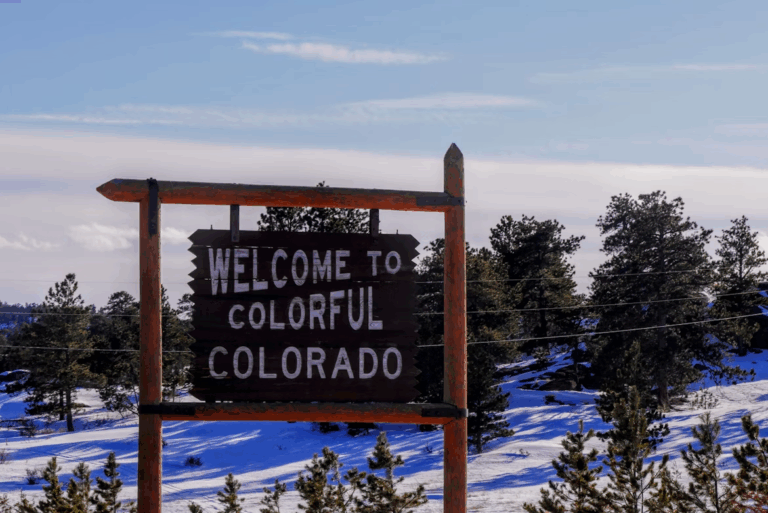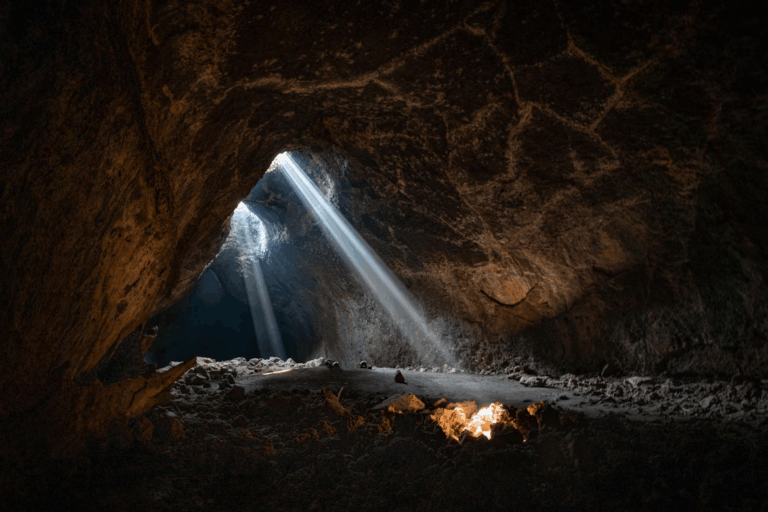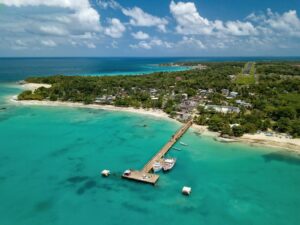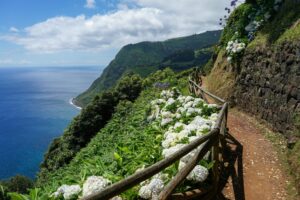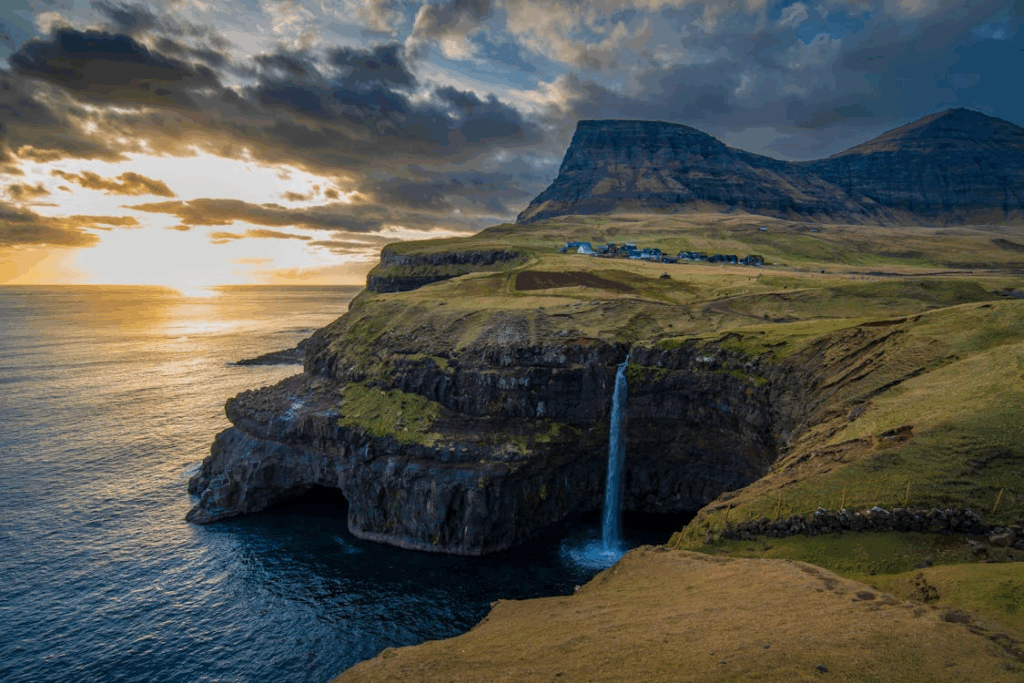
The Faroe Islands stand as one of Earth’s most breathtaking photography destinations, where dramatic landscapes meet ever-changing skies to create the perfect storm of visual magnificence. These 18 emerald islands, scattered between Iceland and Norway, offer photographers an unparalleled playground of rugged cliffs, cascading waterfalls, and atmospheric conditions that transform ordinary moments into extraordinary photos.
What makes Faroe Islands photography so captivating? The answer lies in a perfect combination of untouched wilderness, dynamic weather patterns, and landscapes so surreal they seem crafted by the gods themselves. Every corner reveals a new composition, every moment brings different light, and every photo tells a story of nature’s raw power and beauty.
1. Ever-Changing Weather Creates Photographic Magic
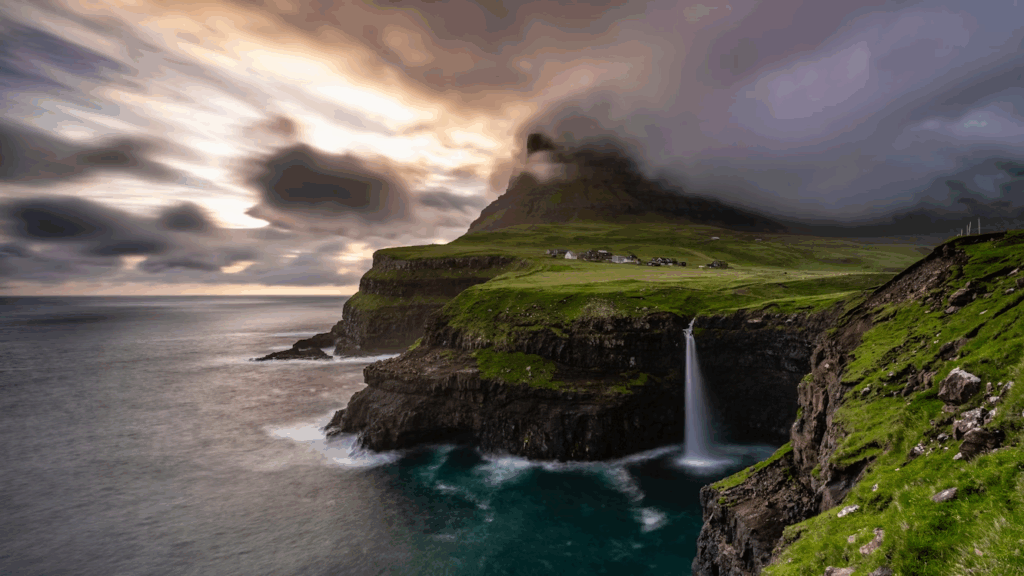
The Faroe Islands are renowned for their famously unpredictable weather, which might seem like a challenge but actually becomes a photographer’s greatest ally. Within a single hour, you might witness soft morning mist giving way to dramatic storm clouds, followed by brilliant sunshine breaking through to illuminate the landscape in golden hues.
This constant weather transformation provides endless opportunities for Faroe Islands photography. The interplay between light and shadow creates depth and mood that static conditions simply cannot match. Photographers often describe the experience as having nature’s own lighting studio, where conditions change faster than you can adjust your camera settings.
The variable weather also means that no two photos of the same location will ever look identical. A waterfall photographed in morning fog will have an entirely different character than the same scene captured under afternoon sunlight or evening storms.
2. Dramatic Cliffs and Unique Geological Formations

The geological drama of the Faroe Islands creates some of the most striking photography subjects on Earth. Centuries of harsh Atlantic weather have carved vertical cliffs that rise straight from the sea, creating compositions that demand wide-angle lenses and careful positioning.
These cliffs aren’t just tall—they’re textured with layers of volcanic rock, grass-covered plateaus, and intricate patterns that add visual interest to every photo. The contrast between the dark volcanic rock and vibrant green vegetation creates natural color palettes that require minimal post-processing.
Faroe Islands photography enthusiasts particularly love locations like Kallur on Kalsoy island, where 600-meter cliffs provide dramatic foreground elements against expansive ocean views. The lighthouse perched on these cliffs adds a human element that provides scale and narrative to landscape photos.
3. Múlafossur Waterfall: The Crown Jewel
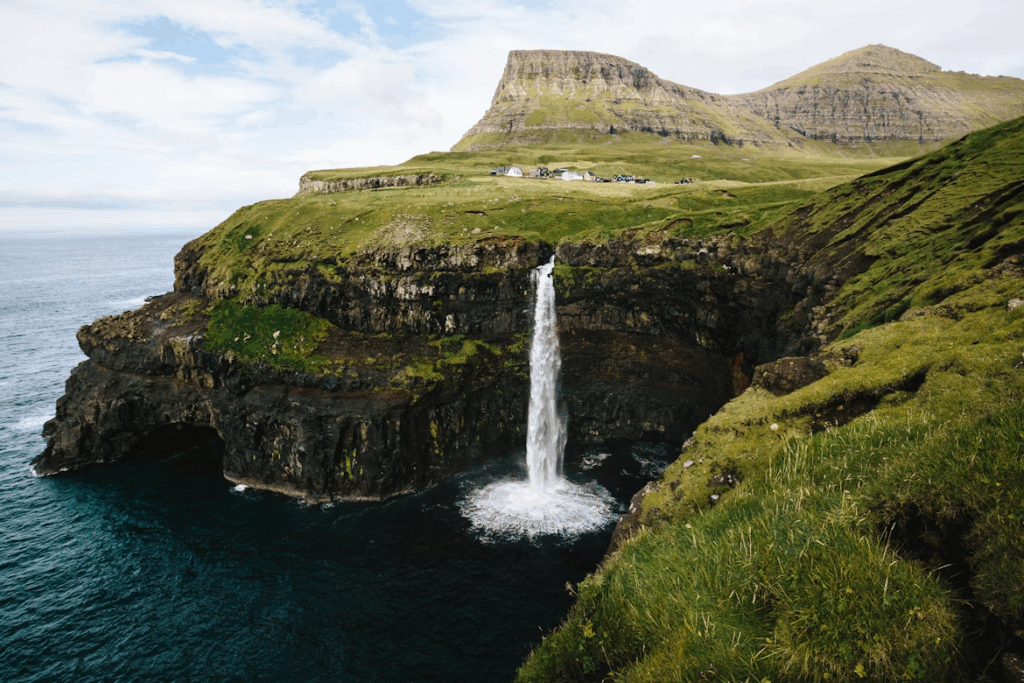
No discussion of Faroe Islands photography would be complete without mentioning Múlafossur waterfall in Gásadalur village. This iconic waterfall has become synonymous with the islands’ photographic appeal, appearing in countless travel magazines and social media feeds worldwide.
What makes this location exceptional for photography isn’t just the waterfall itself, but its dramatic setting. The water plunges directly into the Atlantic Ocean, framed by towering cliffs and the village of Gásadalur. The composition is so perfect it almost seems artificial.
Photographers visiting Múlafossur should plan for multiple visits at different times of day and weather conditions. Morning fog creates mysterious, ethereal photos, while clear conditions reveal every detail of the surrounding landscape. The Faroe Islands’ official tourism website provides detailed information about access and optimal shooting conditions.
4. Pristine Villages with Grass-Roof Architecture
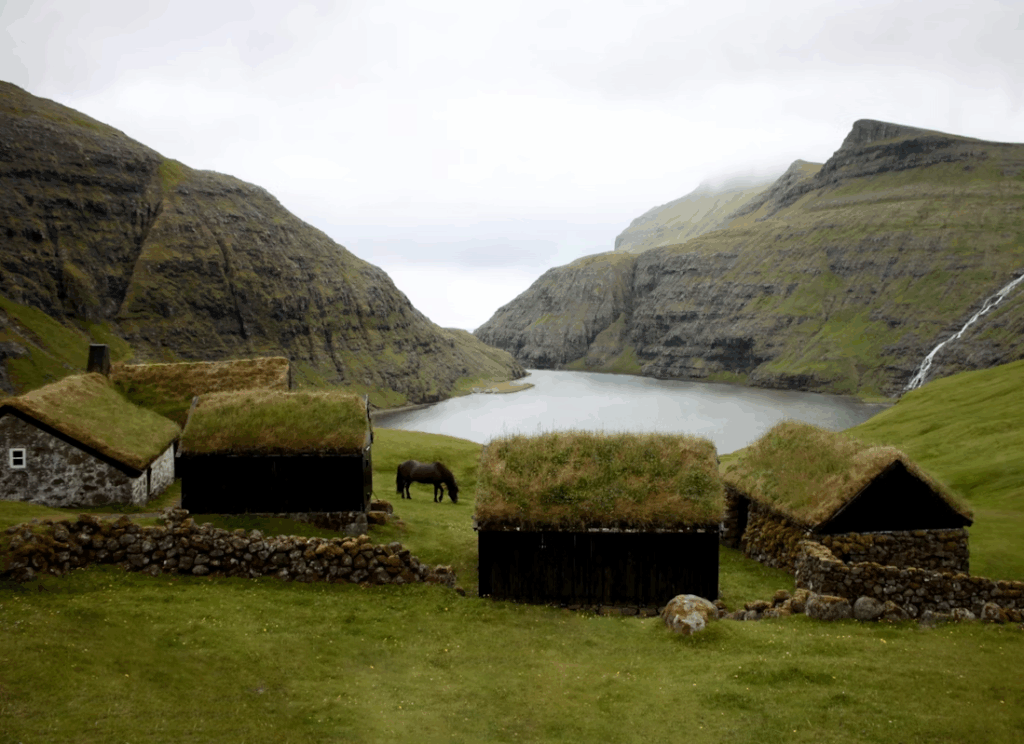
The traditional villages of the Faroe Islands offer unique cultural photography opportunities that complement the natural landscapes. Villages like Bøur and Elduvik feature traditional grass-roof houses that seem to grow directly from the earth itself.
These architectural subjects provide excellent foreground elements for Faroe Islands photography, especially when positioned against dramatic backdrops of sea stacks, mountains, or stormy skies. The turf roofs, covered in vibrant green grass during summer months, create natural leading lines and add organic textures to compositions.
Photography in these villages also captures the harmonious relationship between human settlement and natural environment. The buildings appear to be part of the landscape rather than impositions upon it, reflecting centuries of adaptation to harsh Atlantic conditions.
5. Abundant Wildlife Photography Opportunities
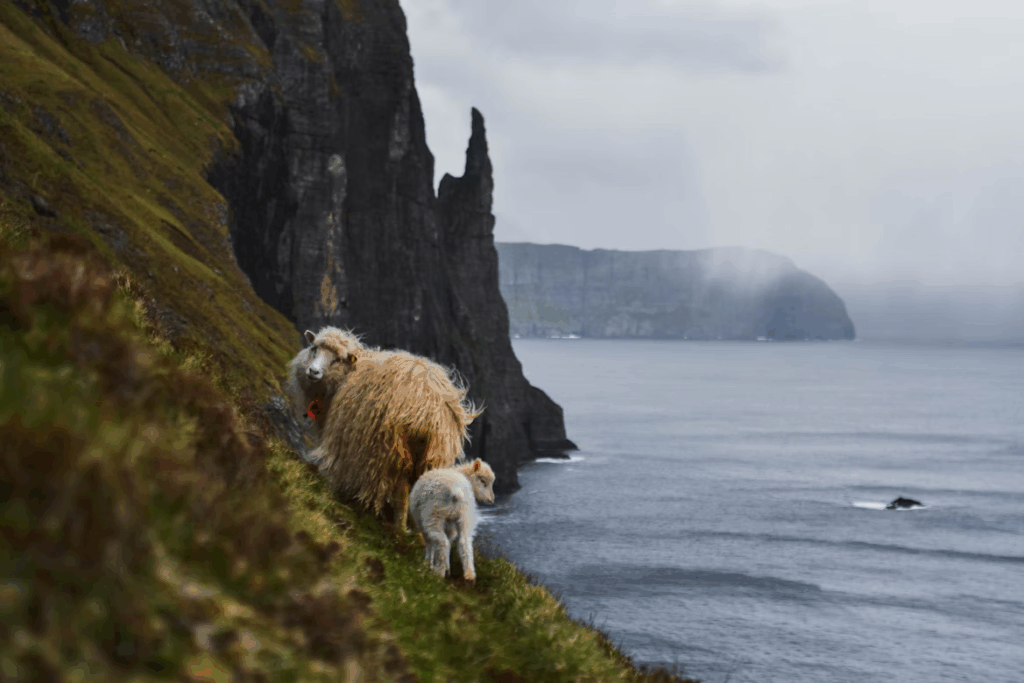
Beyond landscapes, the Faroe Islands offer exceptional wildlife photography opportunities. The islands host thousands of seabirds, including puffins, fulmars, and gannets, which nest on the dramatic cliffs during breeding season.
Faroe Islands photography expeditions during summer months (May through August) provide the best opportunities for bird photography. Locations like Mykines island are particularly renowned for puffin colonies, where these charismatic seabirds can be photographed against stunning coastal backdrops.
The combination of wildlife and landscape in single compositions makes Faroe Islands photography unique. Where else can you capture puffins in the foreground with dramatic sea cliffs and waterfalls in the background? This layered approach to composition creates photos with multiple points of interest and storytelling elements.
6. Minimal Light Pollution for Night Photography
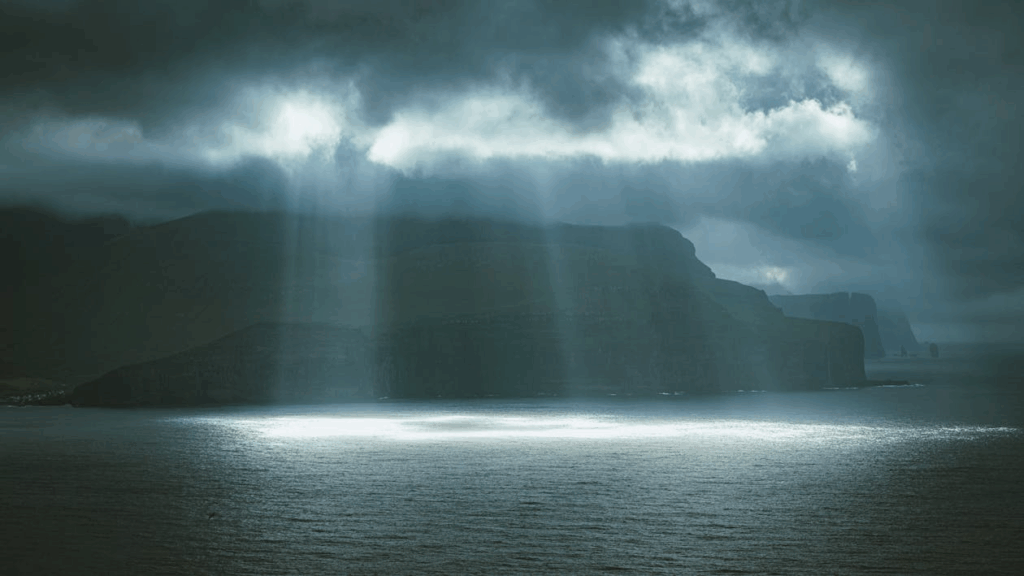
The sparse population of the Faroe Islands creates ideal conditions for night photography. With minimal artificial light pollution, the night skies reveal stars, aurora borealis, and celestial phenomena that urban photographers rarely witness.
Faroe Islands photography after dark requires different techniques and equipment, but the results are spectacular. The northern lights, visible from September through March, create ethereal photos when combined with the islands’ dramatic silhouettes.
Night photography also benefits from the islands’ dramatic topography. Sea stacks, waterfalls, and cliffs provide interesting foreground elements against starry skies, creating compositions that balance terrestrial and celestial elements.
Professional photographer Danny CPH’s comprehensive guide to Faroe Islands landscape photography offers detailed techniques for maximizing night photography opportunities in these pristine conditions.
7. Wind-Sculpted Waterfalls Create Dynamic Scenes
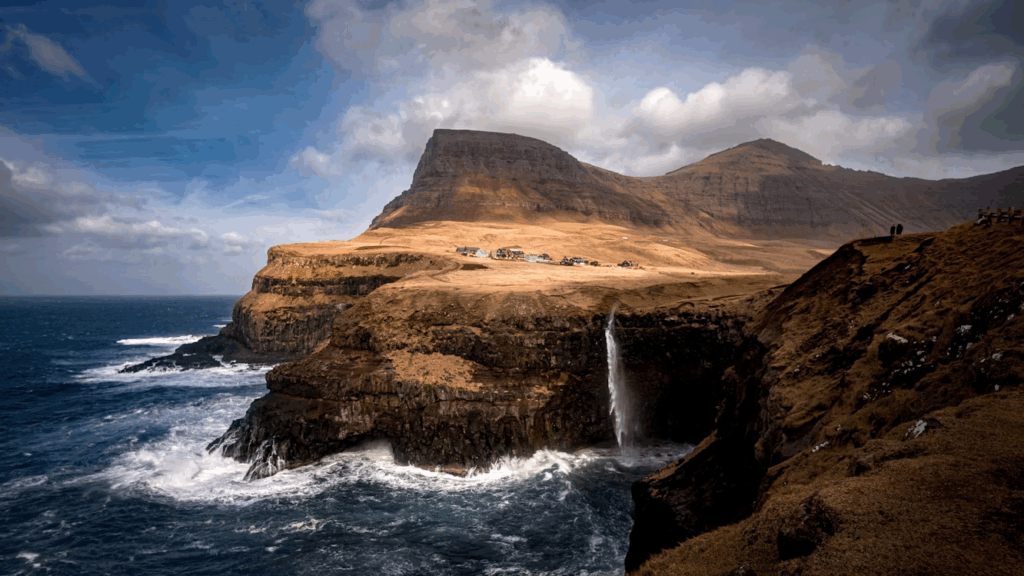
The Faroe Islands’ constant winds create unique photographic phenomena, particularly with waterfalls. Strong Atlantic winds sometimes cause waterfall streams to blow upward or sideways, creating dynamic photos that capture motion and energy in unexpected ways.
This weather interaction produces photography opportunities that exist nowhere else on Earth. Waterfalls like Fossa on Streymoy island can appear completely different depending on wind conditions, sometimes creating mist clouds that add atmospheric elements to compositions.
Photographers working in these conditions need sturdy tripods and weather protection for their equipment, but the results justify the extra preparation. Faroe Islands photography in windy conditions produces images with natural special effects that no post-processing can replicate.
8. Year-Round Shooting Opportunities
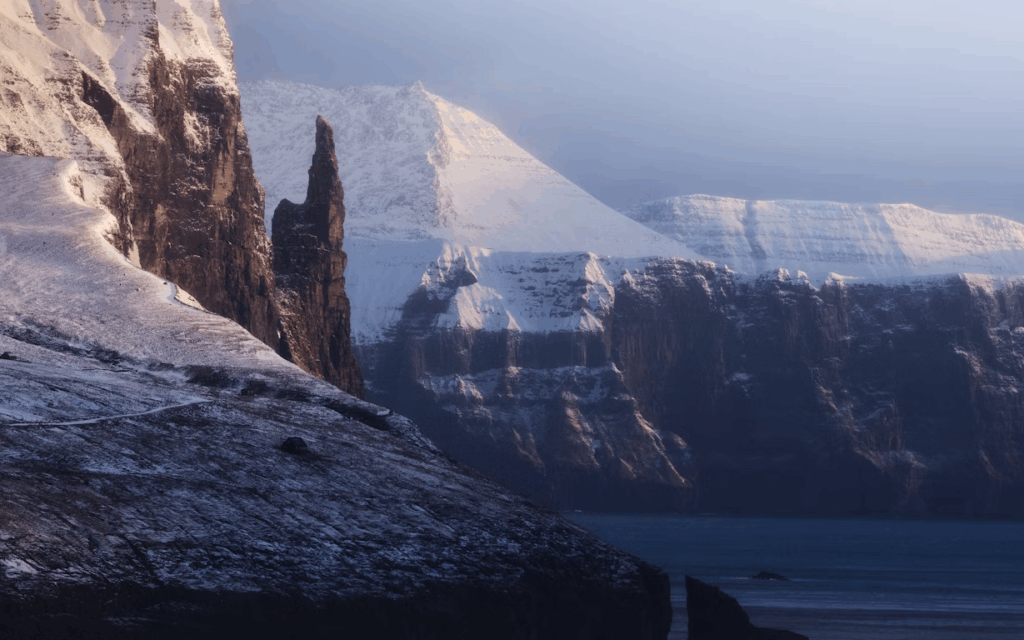
Unlike many landscape photography destinations that have distinct peak seasons, the Faroe Islands offer compelling photo opportunities throughout the year. Each season brings different character and photographic possibilities.
Summer Faroe Islands photography features vibrant green landscapes, extended daylight hours, and accessible hiking trails. Autumn brings dramatic storm systems and moody atmospheric conditions. Winter offers snow-covered landscapes and increased aurora borealis activity, while spring showcases waterfalls at their most powerful from snowmelt.
This seasonal diversity means photographers can return multiple times and capture entirely different photos of the same locations. The islands’ maritime climate moderates temperature extremes, making year-round photography more comfortable than many other Nordic destinations.
9. Accessible Yet Remote Locations
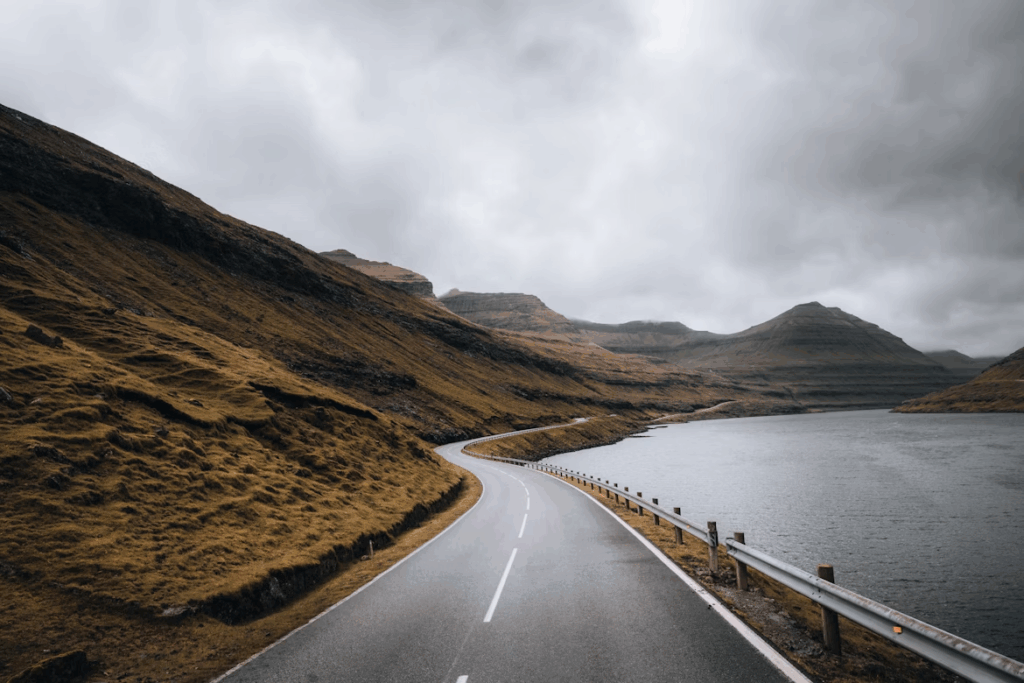
One of the Faroe Islands’ greatest advantages for photography is the combination of dramatic landscapes with reasonable accessibility. Many iconic photo locations are reachable by car or short hikes, unlike remote wilderness areas that require multi-day expeditions.
The road tunnel system connecting major islands makes it possible to photograph diverse locations within a single day. Faroe Islands photography workshops often cover multiple islands and dozens of shooting locations during week-long visits.
This accessibility doesn’t diminish the sense of remoteness that makes photos from the Faroe Islands so compelling. The landscapes maintain their wild character while being logistically manageable for photographers carrying valuable equipment.
10. Unique Atmospheric Light Conditions
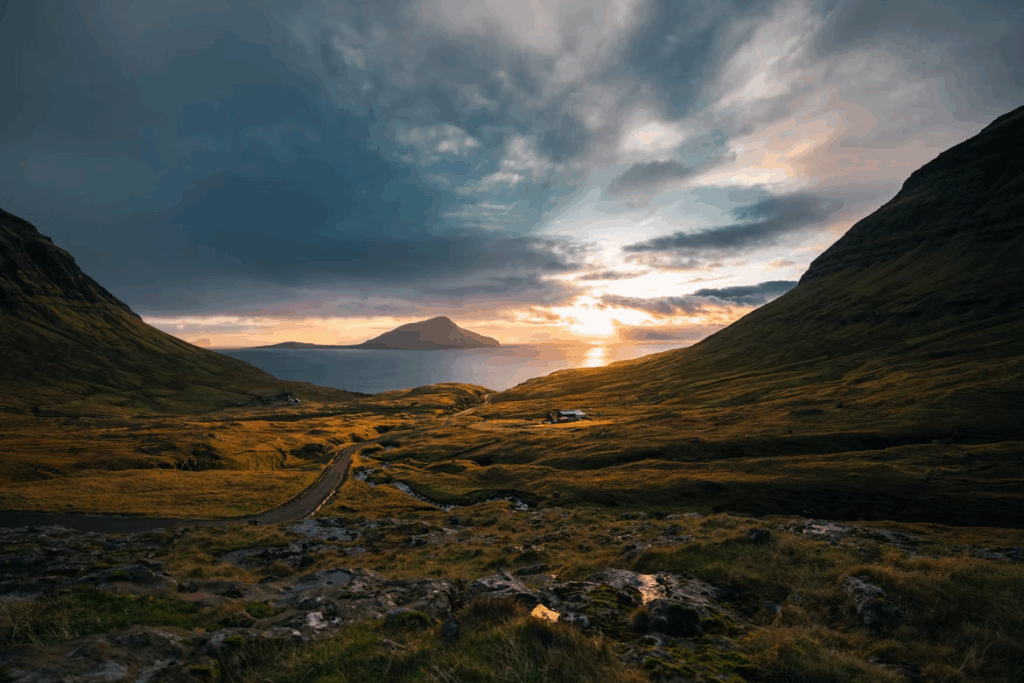
The Faroe Islands’ position in the North Atlantic creates atmospheric light conditions that photographers describe as magical. The combination of maritime air, variable cloud cover, and northern latitude produces soft, even lighting that flatters landscape subjects.
Faroe Islands photography benefits from extended golden hour periods, particularly during summer months when the sun never fully sets. This prolonged quality light makes it possible to shoot compelling photos throughout much of the day, not just during brief dawn and dusk periods.
The atmospheric conditions also create natural filtration effects, reducing harsh contrasts and producing photos with natural gradients and tonal transitions. Many photographers find they need less post-processing work on images captured in the Faroe Islands compared to other destinations.
Essential Photography Equipment for the Faroe Islands
Successful Faroe Islands photography requires specific equipment considerations. Wide-angle lenses (16-35mm) are essential for capturing the expansive landscapes and dramatic compositions. Telephoto lenses (200mm+) enable wildlife photography and isolating distant landscape elements.
Weather protection is crucial for both photographers and equipment. Waterproof camera covers, lens cloths, and sturdy tripods that can withstand strong winds are non-negotiable. The detailed equipment guide by Renee Roaming provides comprehensive recommendations for gear selection.
Photography in the Faroe Islands also benefits from drone equipment, where legally permitted. Aerial perspectives reveal patterns and compositions invisible from ground level, though strong winds require careful flight planning and skilled operation.
Planning Your Faroe Islands Photography Adventure
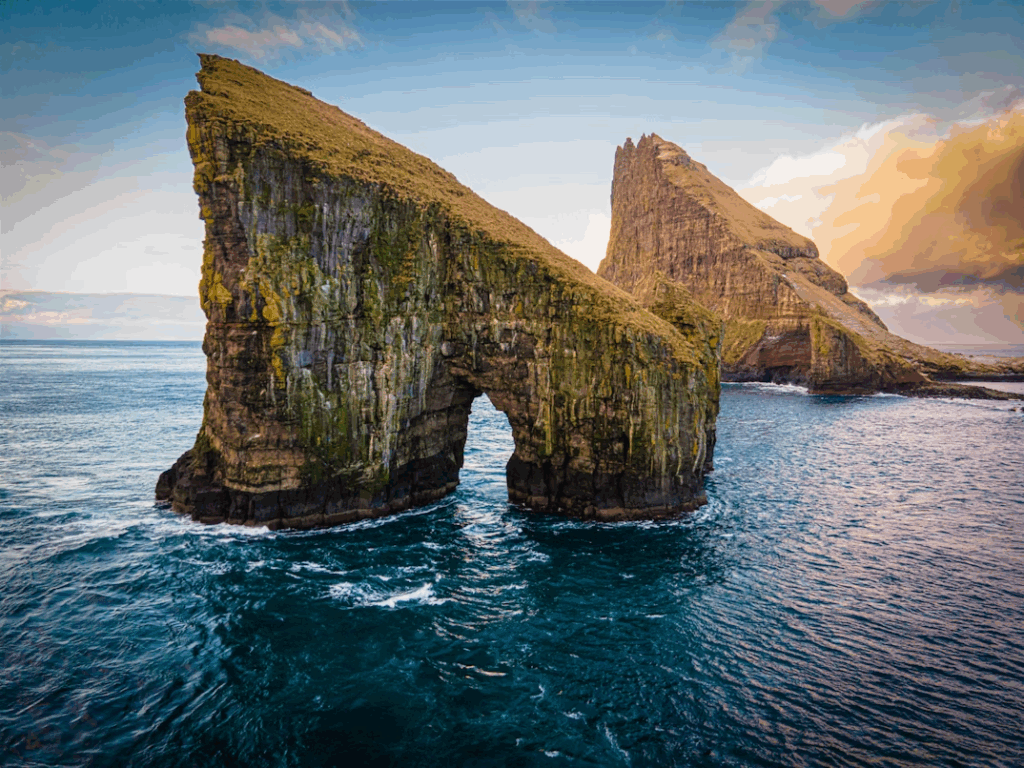
The key to successful Faroe Islands photography lies in thorough planning combined with flexibility for changing conditions. Weather apps and local forecasts become essential tools, as conditions can shift rapidly and dramatically affect photo opportunities.
Accommodation should be strategically located to minimize travel time to key photography locations. Many photographers recommend staying in different villages throughout a visit to maximize shooting opportunities during optimal light conditions.
Faroe Islands photography expeditions benefit from local knowledge and guides who understand weather patterns, access routes, and seasonal variations. Professional workshops and photo tours provide structured approaches to capturing the islands’ most compelling subjects.
Conclusion
The Faroe Islands represent the pinnacle of landscape photography destinations, combining dramatic natural beauty with practical accessibility and year-round shooting opportunities. From the iconic Múlafossur waterfall to remote cliff-top lighthouses, every location offers unique compositions and atmospheric conditions that challenge and inspire photographers.
What sets Faroe Islands photography apart is the seamless integration of multiple photographic genres within single compositions. Landscape, architectural, wildlife, and atmospheric elements combine naturally to create photos that tell complete stories rather than simply documenting beautiful scenes.
For photographers seeking to expand their portfolios with truly distinctive images, the Faroe Islands offer unparalleled opportunities. The combination of dramatic landscapes, favorable shooting conditions, and accessible logistics makes this archipelago a dream destination for serious photography enthusiasts.
Whether you’re drawn to the technical challenges of wind and weather, the compositional opportunities of dramatic topography, or the artistic possibilities of ever-changing light, Faroe Islands photography delivers experiences and images that will define your photographic journey.
The islands’ remote location and pristine conditions ensure that photos captured here possess a timeless quality that connects viewers with nature’s raw power and beauty. In an age of heavily processed digital imagery, Faroe Islands photography offers authentic moments of natural drama that require minimal enhancement to create compelling visual stories.
For photographers planning similar adventures in Nordic waters, our guides to Norwegian fjords kayaking and Pacific Coast fishing villages offer additional inspiration for capturing dramatic coastal landscapes and traditional maritime communities.


